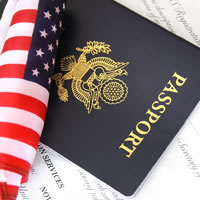Introduction to Intellectual Property.

What is Intellectual Property?
According to the World Intellectual Property Organization (WIPO), Intellectual Property (IP) refers to "creations of the mind, such as inventions; literary and artistic works; designs; and symbols, names and images used in commerce." IP includes industry information like formulas and ideas, inventions and industrial designs. It also includes literary and artistic creations like books, movies, music, architectural designs and Internet web pages. IP is protected by law. People can protect IP by obtaining patents, copyrights and trademarks to secure their rights. Once the IP is protected, the owners may gain some monetary benefit or acknowledgment of the unique work that they have created.
Types of Intellectual Property Protection
Patents--Patents protect inventions and can last up to 20 years. The process to register a patent with the government can be quite lengthy (over a year), but in doing so, you obtain the right to exclude everyone else from benefiting from the invention. However, others can obtain a license to use it.
Trademarks--A trademark is a name, phrase, sound, symbol, or design used when dealing in services or products. Trademarks can last for 10 years, once registered, and can then be renewed. They often protect the brand for a product. There is no actual requirement to register a trademark. If a company creates a symbol or name, all it has to do is attach the TM symbol to it.
Copyrights--Copyrights protect literary or artistic expressions like books, music or movies. They can last for the life of the author plus 50 years. The owner can copy the work, make derivative works from it, sell it, perform it, or show it in public. No registration is required unless someone decides to sue over it. Trade secrets--A trade secret can be any "formula, pattern, device or compilation of data" that gives the owner an edge over its competition. State, not federal law, governs trade secret protection. The owner must prove that it is a secret, that the trade secret adds some value to the company, and the owner has taken steps to keep it secret.
Why Does Intellectual Property Need Protecting?
There are several reasons why IP needs protecting. First, our society cannot grow, develop and change without new technologies and inventions. Second, by protecting IP rights, we encourage people to take more chances on new ideas without the threat of not getting the benefit of the new idea. Third, when you protect IP, you encourage people to invest time and money into new ideas and inventions, which may lead to more jobs and more economic opportunities. What Can You Do to Protect IP? Once you have an original idea or create an original work, take deliberate steps to protect it. There are several specific steps you may want to take to protect your IP rights. Make Sure No One Else Has Done It Before Find out if someone has already created your IP. The United States Patent and Trademark Office (USPTO) website can be an invaluable resource for this. Doing your research can save you a lot of grief should your idea already be protected. Many types of protection aren't available if your idea is similar to one that is already covered under some other IP protection. Register Your IP With The Government Different IP rights provide different levels of protection for different periods of time. Often, you may have to register more than one type to completely protect your IP. Keep It a Secret and Show Ownership Over It Keep your IP from becoming public knowledge. Avoid telling anyone about your idea or invention except for people who can help you enhance it. This may mean not telling anyone at work or at home. Document everything. Write down everything you can about your idea in full detail. Describe what it is, how it works, and keep this record in a safe place.
















